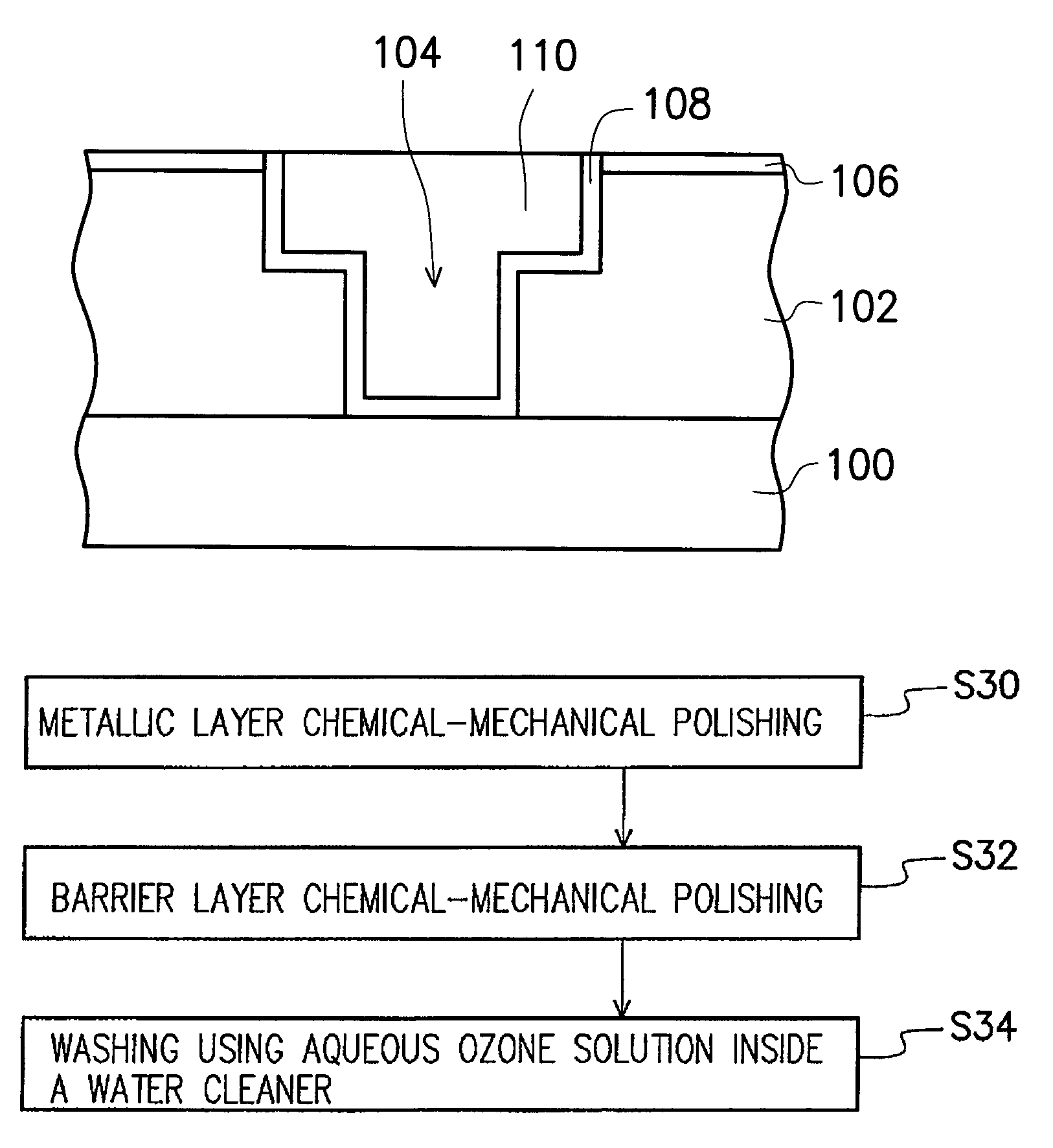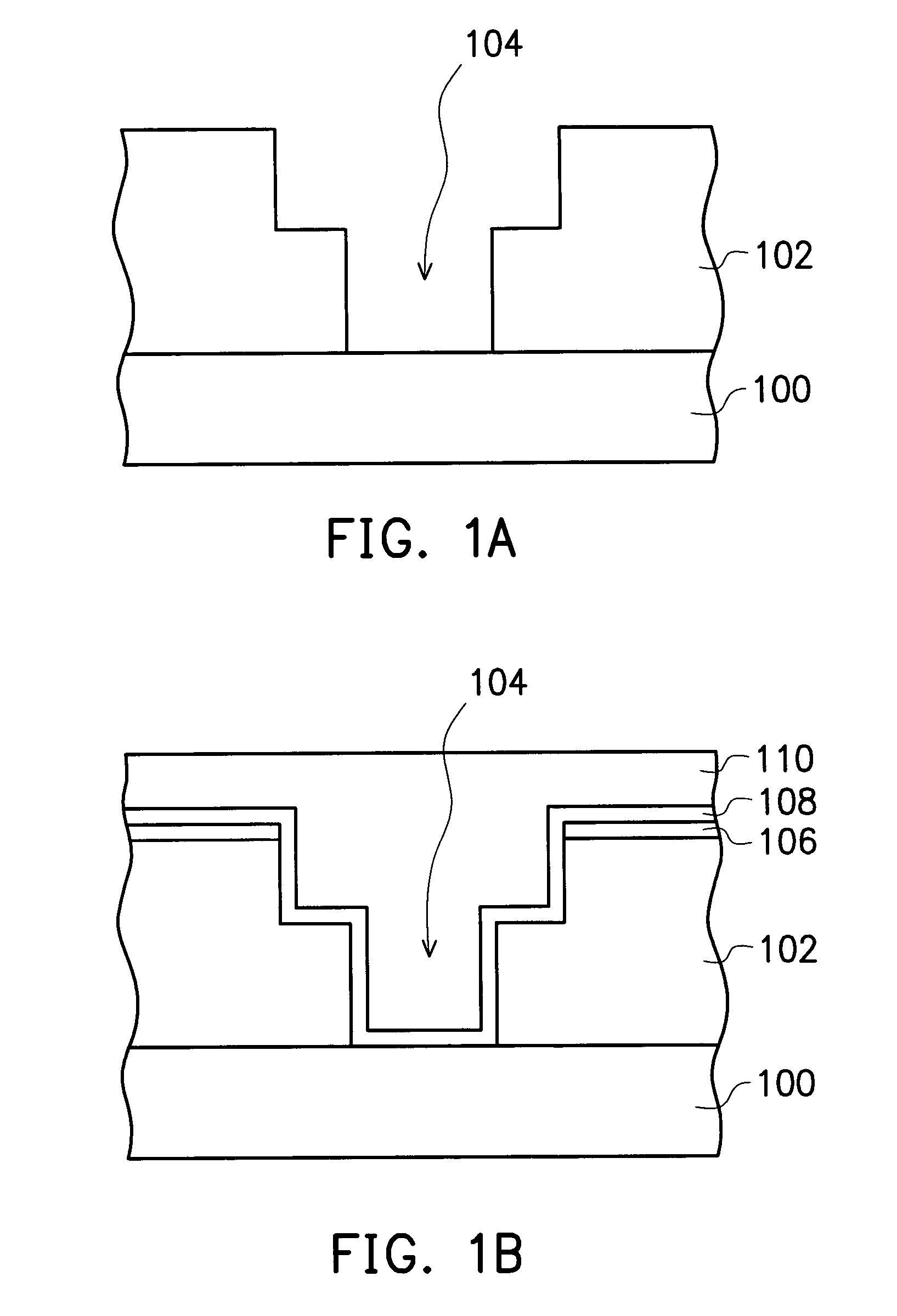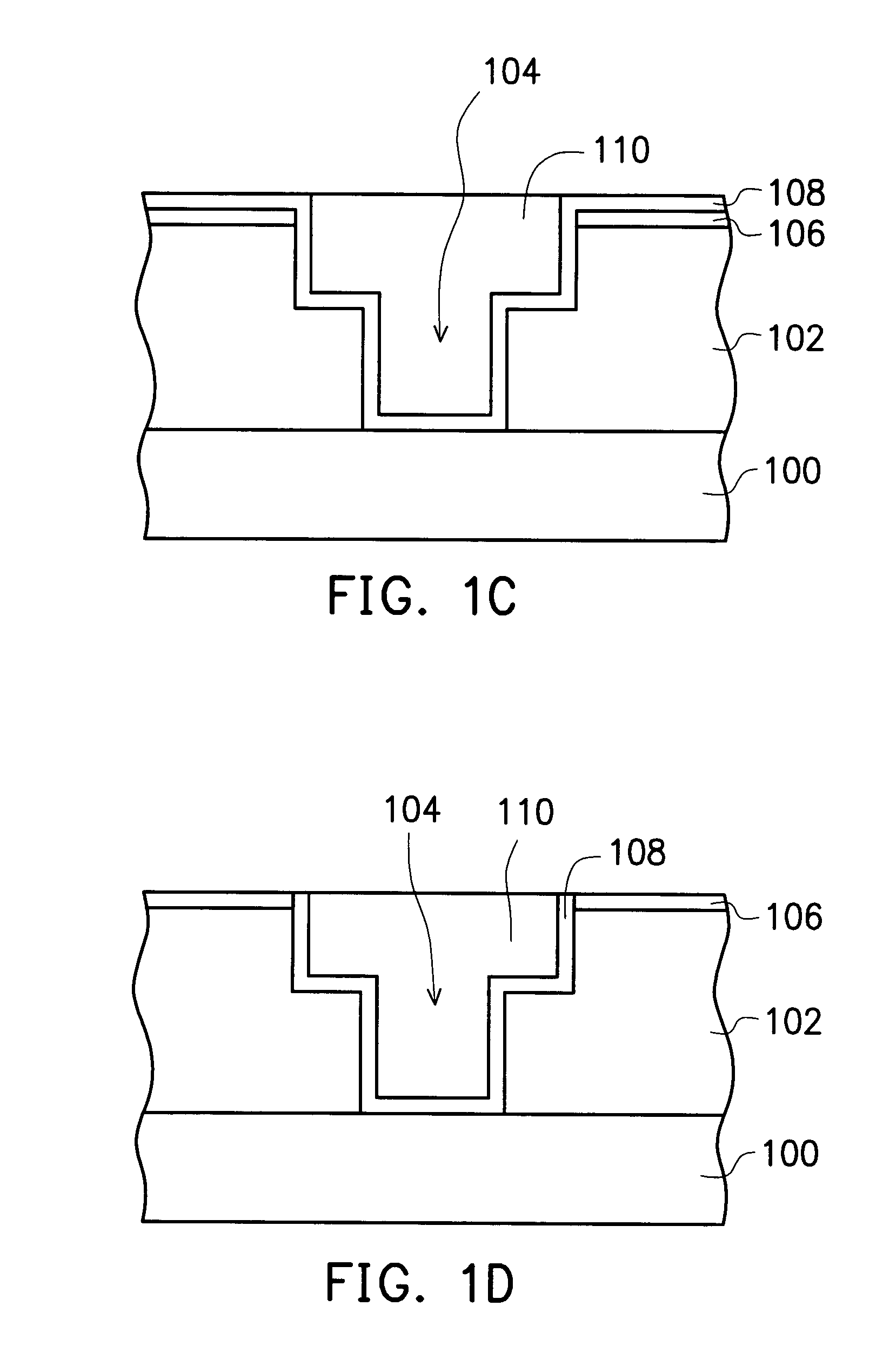Method of removing contaminants from a silicon wafer after chemical-mechanical polishing operation
a technology of chemical-mechanical polishing and silicon wafers, which is applied in the direction of semiconductor/solid-state device manufacturing, basic electric elements, electric apparatus, etc., can solve the problems of large quantities of carbon-rich particles, surface defects, and the inability to clean a wafer with de-ionized water to remove all surface contaminants, so as to achieve a minimal by-product generation, less environmental toxic exhaust, and exceptional atomic cleansing
- Summary
- Abstract
- Description
- Claims
- Application Information
AI Technical Summary
Benefits of technology
Problems solved by technology
Method used
Image
Examples
Embodiment Construction
[0022]Reference will now be made in detail to the present preferred embodiments of the invention, examples of which are illustrated in the accompanying drawings. Wherever possible, the same reference numbers are used in the drawings and the description to refer to the same or like parts.
[0023]The method of this invention is suitable for removing contaminants from a silicon wafer both during and after a chemical-mechanical polishing. A damascene process is used in the following example for illustrative purpose only. Hence, the illustration should not be regarded as a restriction to the application of this invention.
[0024]FIGS. 1A through 1D are schematic cross-sectional views showing the progression of steps for forming a damascene structure according to one preferred embodiment of this invention.
[0025]As shown in FIG. 1A, a substrate 100 (the diagram is simplified by not showing devices on the substrate 100) is provided. A dielectric layer 102 is formed over the substrate 100. The d...
PUM
 Login to View More
Login to View More Abstract
Description
Claims
Application Information
 Login to View More
Login to View More - R&D
- Intellectual Property
- Life Sciences
- Materials
- Tech Scout
- Unparalleled Data Quality
- Higher Quality Content
- 60% Fewer Hallucinations
Browse by: Latest US Patents, China's latest patents, Technical Efficacy Thesaurus, Application Domain, Technology Topic, Popular Technical Reports.
© 2025 PatSnap. All rights reserved.Legal|Privacy policy|Modern Slavery Act Transparency Statement|Sitemap|About US| Contact US: help@patsnap.com



